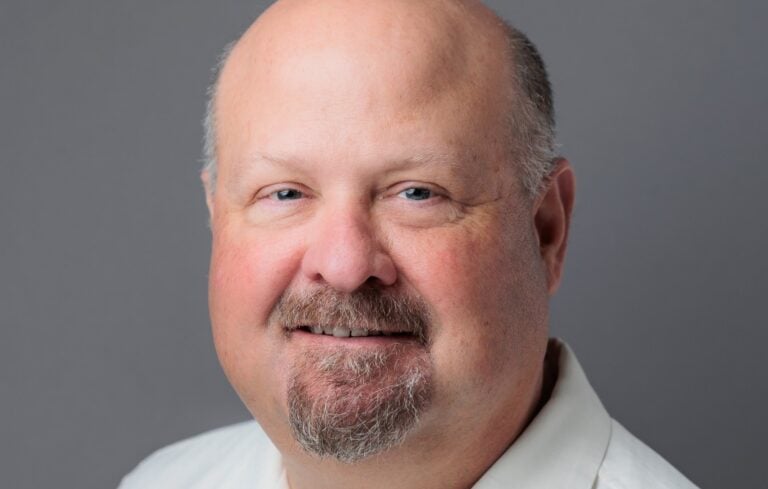
Every year, U.S. prisons and jails release nearly 700,000 men and women back into society. Many people impacted by incarceration leave prison without much more than the clothes on their back and enough money for a few meals. While opportunities do exist for people who are incarcerated to continue their education and learn marketable skills while serving their sentence, they are not widely available. And for those who don’t have a solid support system outside of prison, the resources needed to successfully reenter their communities may seem nonexistent. With few resources and often minimal skills, finding gainful employment can be difficult, even without the negative bias that comes with a criminal record. However, employment is a significant factor in reducing recidivism. This is why second-chance hiring is so important.
Also called fair-chance hiring, second-chance hiring is the practice of hiring individuals with criminal records. According to SHRM, one-third of U.S. working-age adults, equating to 70 million people, have a criminal record. By opening job opportunities to people impacted by incarceration, businesses are gaining access to a considerable pool of untapped talent. In doing so, they are also giving these individuals the resources they need to be self-sufficient and decreasing the likelihood that they return to prison. For second-chance hiring to work, we need to accept that people cannot be defined solely by their worst decision. Many people impacted by incarceration work every day to prove they are much more than the crime they committed. One such person is Timm Wroe.
Speaking with Timm, you would never guess that he had once made a decision that would lead him to spend 25 years of his life incarcerated. He emanates positivity and has an earnest appreciation for his life outside of prison. One can quickly tell that his time spent incarcerated changed his perspective, not his character. That’s because Timm decided he would do everything he could to set himself on the right path for a better life. He knew he wanted to continue his education, and midway through his sentence decided to pursue a business degree. This was part of his plan to start his own painting business after he was released, knowing even then that employment would be hard to find for someone with a criminal record. He was able to enroll in a program through Central Arizona College, excelling in his classes and earning a spot on the dean’s list with a 4.0 GPA.
Unfortunately, and due to circumstances outside of his control, Timm needed to transfer to another college program, but the grant for that program would not cover a person with a sentence as long as his. “You can pay for it, but you can’t be a student otherwise,” Timm explained. “It can be hard to get into education opportunities, work programs or training. With a longer sentence, they see higher risk of recidivism,” he continued, adding “I don’t blame the system, but the access to job and education opportunities needs to change.”
Through effort and determination Timm worked his way up to a floor manager position in the sewing unit—one of the best jobs available in the prison. Despite roadblocks, he took his educational and occupational goals as far as he could while incarcerated, knowing the experience would help him after he was released from prison. What he didn’t know was how different his life after prison would be from his original plan. “When I was initially released, I had an ankle monitor, so my job options were limited,” Timm shared, continuing “there isn’t much you can do when you can’t leave your house.”
While looking for jobs, he came across a remote position at Televerde. He dismissed the company as a telemarketing firm initially. But given that he would be able to work from home, he decided to pursue the role anyway. He saw it as a stopgap, something to get him on his feet until he could begin the work needed to start his painting business. After a Televerde recruiter got in touch with him, Timm decided to do some more research. “I Googled Televerde and the Televerde Foundation and really read up on what they do,” he explained. “After reading several articles, watching videos and learning about their work with SAP, I knew this job would be way more than telemarketing,” he concluded.
Since his initial call with the recruiter, Timm has done a complete 180 on his original plan, now working for Televerde as an Inside Marketing Representative (IMR). He had never worked a corporate job and was concerned that he wouldn’t have the right skills for the role. That all changed during his Zoom interview with inside marketing manager, Tina Stine. “I was nervous going into the interview, but Tina really helped me relax.” Timm shared. “She related her story to mine, as she also had a long prison sentence,” he continued. “She helped me realize that the skills I picked up while incarcerated were more valuable than I thought and explained what would carry over into my new role.”
From Tina’s perspective, she knew Timm would be a great fit for her team the first time she spoke with him. She has since become a mentor to him, and one of his biggest supporters. He recalled that the morning after he accepted his job offer, Tina texted him “welcome to the family.”
Televerde’s mission is to provide second chances and meaningful employment for women who are currently and formerly incarcerated. Timm is not the first man impacted by incarceration to work for the company, but his story is not the norm. Despite that, he’s seen a lot of success already. He is now aiming for a management position, endorsed by Tina and several other leaders who see his potential. His favorite thing about the company is that “Televerde includes everyone—we’re all unified by our experiences, not divided by any other factors.”
“The family tree of success extends outside of Televerde,” Timm noted, continuing “we, along with our partners and graduates are showing people that stereotype us what is possible.”
Success stories like Timm’s are not common, but he believes that doesn’t have to be the case. He is part of a statewide coalition for reentry in Arizona, speaking often about reentry and his experience at events. “To change minds, people need to be exposed to people that have been incarcerated,” Timm explained. “It’s especially important for people in the business world because companies are missing out on so many talented, hard-working people,” he added, continuing, “workers impacted by incarceration are dedicated, grateful, and we understand how many opportunities we have wherever we are working.
“I see the world is so set on acceptance, except when it comes to the formerly incarcerated. These are the people who need the most help to succeed but receive the least,” he said, adding that “if a person doesn’t have the desire to change, they won’t. You need to want to be better.”
Ultimately, Timm believes that the positive results he achieved are replicable. However, this would require a collective change in our mindset about people affected by incarceration, along with changes in the policies that affect them. “I tell anyone that will listen to me that society needs to stop stigmatizing people based on their worst decision. A criminal is something you are for a moment in time, not a lifetime.” By ending the stigma around people impacted by incarceration, stories like Timm’s can become the standard, not the exception.




Chief Executive Group exists to improve the performance of U.S. CEOs, senior executives and public-company directors, helping you grow your companies, build your communities and strengthen society. Learn more at chiefexecutivegroup.com.
0

1:00 - 5:00 pm
Over 70% of Executives Surveyed Agree: Many Strategic Planning Efforts Lack Systematic Approach Tips for Enhancing Your Strategic Planning Process
Executives expressed frustration with their current strategic planning process. Issues include:
Steve Rutan and Denise Harrison have put together an afternoon workshop that will provide the tools you need to address these concerns. They have worked with hundreds of executives to develop a systematic approach that will enable your team to make better decisions during strategic planning. Steve and Denise will walk you through exercises for prioritizing your lists and steps that will reset and reinvigorate your process. This will be a hands-on workshop that will enable you to think about your business as you use the tools that are being presented. If you are ready for a Strategic Planning tune-up, select this workshop in your registration form. The additional fee of $695 will be added to your total.

2:00 - 5:00 pm
Female leaders face the same issues all leaders do, but they often face additional challenges too. In this peer session, we will facilitate a discussion of best practices and how to overcome common barriers to help women leaders be more effective within and outside their organizations.
Limited space available.

10:30 - 5:00 pm
General’s Retreat at Hermitage Golf Course
Sponsored by UBS
General’s Retreat, built in 1986 with architect Gary Roger Baird, has been voted the “Best Golf Course in Nashville” and is a “must play” when visiting the Nashville, Tennessee area. With the beautiful setting along the Cumberland River, golfers of all capabilities will thoroughly enjoy the golf, scenery and hospitality.
The golf outing fee includes transportation to and from the hotel, greens/cart fees, use of practice facilities, and boxed lunch. The bus will leave the hotel at 10:30 am for a noon shotgun start and return to the hotel after the cocktail reception following the completion of the round.